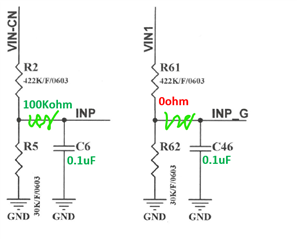Other Parts Discussed in Thread: CD40194B
Tool/software:
Dear team,
My customers want to use TPS48111-Q1 without MCU control.
they tied the EN/UVLO and INPG/ INP to the VS pin 48V over resistor dividers. in this case, the INP and INP_G were pulled up almost synchronously.
now their control sequence want to pull up the INP_G first and then the INP to decrease the inrush current.
how does BU site recommend for the this non-MCU based additional circuit?
is cd40194b suitable here?
Best regards,
Hank Lin



